So I’ve been playing around with the new Yashica MF-1 “art” camera for a few days and have started to get a grasp of this plastic 35mm fixed everything camera. But is it indeed a tweaked single use camera as many speculate and more importantly is it any good ?
This is the first of 2 review posts. In this part I’ll outline and review the camera in details as normal. But then we’ll see how it measures up to some appropriate competition in the second part.

A little bit of History to start…
1. In the beginning
The orginal Yashica company can trace its roots back to the tail end of world war II. Yashima Seiki Seisakusho (八洲精機製作所) as the company was known then was a subcontractor for other companies and notably made shell fuses for the Japanese war effort. After the war it continued to make subcontracted parts for other companies but in 1953 started to make cameras. There is some debate about which is the first Yashic camera. The first camera produced by the company was the TLR Pigeonflex but this was sold by another company. The company began to market there own cameras with Yashima in the title. These were superceed by cameras called Yashicaflex and the Yashica name would be used from 1957 in the US before the company rebranded itself as Yashica in 1958

2. Glory Days & Fall
Yashica become one of the legendary Japanese makes and is best known for it’s TLRs and its range of single lens rangefinders including the Elecro 35. It is also prominent for its tie in with contax and the series of SLRs they produced.
In 1983 the company was taken over by Kyocera whom like Yashica started out making parts for other companies. In Kyocera’s case it was specialist ceramic coatings for the electronics and other industries. Although not seen as the the high point this period never the less produced some of the most sought after camera today the Yashica T* series and several other models.
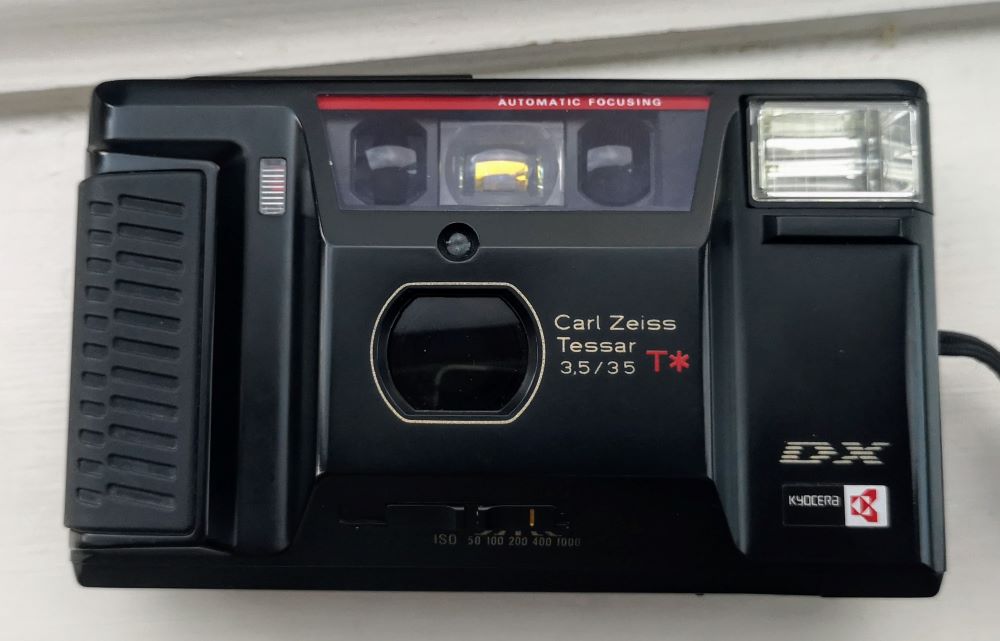
Kyocera withdrew from camera manufacture in 2005. The Yashica named would periodically live on as they sold the rights to Hong Kong based MF Jebsen Group. They sold several low end digitals bearing the Yashica name but made by the likes of Haking (aka Halina). None of these reached the glory of the old company although they may have a digital lomo vibe to some. The Yashica EZ F521 for example was known as the digital Holga for some time.
3. The New Yashica
But in 2017 a Kickstarter project appeared promising to bring back Yashica’s glory. The camera on offer at the time was the Y35 a digital camera that promised a film like experience. Or as the critics put it a cheap rubbish camera not much more than a shoddy made toy. To me the truth lies between the two view points but that’s another story.

Given the predominately negative feedback , many assumed it was sayonara. But earlier this year the new Yashica launched another Kickstarter. This time round it was for own brand film and the MF-1 camera. They also teased 2 further cameras based on prior Yashica designs including the MF-2 (aka a rehashed MF-2 Super).
So What is the MF-1 ?
The new MF-1 is a simple 35mm camera made predominantly out of plastic. It’s core spec is a fixed focus 31mm lens with fixed f/11 aperture and shutter around 1/120. Near focus is described as 1m and the flash powered by a single AA works between 1-3m.
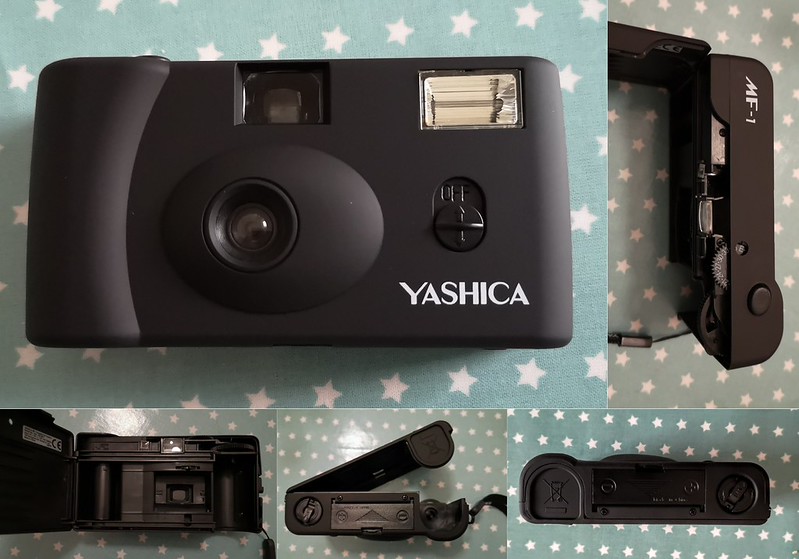
And erm…. that’s it. Oh mines came with a strap and a roll of film although the latter may just be for the kickstarter project.
The maths are actually good using a couple of Depth of Field/Hyperfocal calculators if you set the focal point at 2.86m with this spec you should in theory get a reasonably sharp image from 1.4m to infinity. i usually find folk over egg the sharpness with near objects. Sadly as far too often happens, the maths were not quite done as we’ll see.
Why do you keep on calling it the New MF-1
Easy. Someone IMHO has goofed. In 1977 Yashica launched the 35 MF a zone focus auto exposure camera with built in flash after the lucrative flash compact market. It was the first MF series camera and was followed by a mildly tweaked update,. That update was the original MF-1.

Whilst not a key moment in photo graphic history it’s a much more advanced beast
These guys are not alone in such goofs and this pales in to insignificance if you consider Olympus and the PEN CSC cameras. When these were launched Olympus clearly styled and used the name from the Legendary PEN F half frame SLR. And that was cool for some years, until some muppet in marketing though the next one should be called the PEN F.
This new MF-1 looks vaguely familiar ?
It does , doesn’t it ?
In fact it looks very similar to a host of single use cameras from Ilford‘s ones right through to JCH Kassha with the off centre elliptical bulge around the lens. But they’re single use you say and this isn’t….
But the Lomography Simple use cameras which make no bones about the genetic link to the disposables. The MF-1 pretty much mirrors this. It has the same door and loading mechanisms with just one minor difference (a loading button) and some otherwise subtle styling differences…..

Worth noting a weird production decision at the last minute Yashica decided to offer this in 16 rubberised colours from my cool black one to some pretty day-glo stuff as well as the original matt plastic with rubbish stickers.
Using the new MF-1
To load the camera you use the switch to open the film compartment door. The film canister sits on the right when viewed from the rear and you take the leader and hook it onto small hook on the loading drum and check the perforations of the film line up with the sprockets over the film frame.
You then close the door and using the winder knob on the base you wind on the film onto the loading drum.
When this is done you’re ready to go. The thumbwheel film advance effectively winds the film back into the cartridge each time you use. This is the same system as you get with any disposable and has the advantage that if you open the rear door by accident most of your taken shots will be in the can. The downside is that any unexposed film will be flashed.
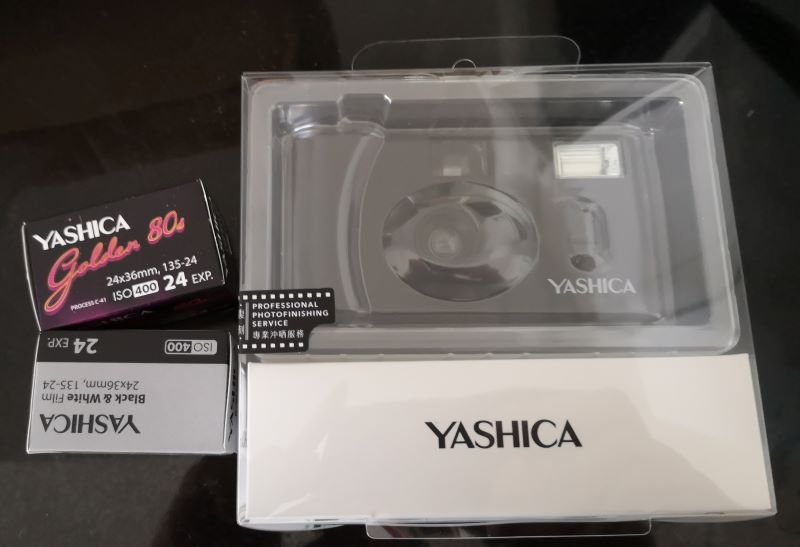
Otherwise it’s just wind until the advance stops with a click, take shot. there is no metering or light sensor so the only other control you have is to turn on the flash by a switch on the front. This better than most disposable where you need to hold a button down all the time a(avoiding getting your fingers in the shot).

The film counter automatically sets itself during the loading and counts down. It is fairly easy to read.
Build Quality – The Good the Bad and the Leaky
The body work generally looks okay and is better than the proposed dull black plastic in a thin card wrapper. The rubberised coating adds a bit more grip too. This ain’t winning any awards but is quietly understated in black and doesn’t scream toy camera at you. There a bulge for gripping with your right hand. the simple viewfinder is what you’d expect from camera in the class too. It’s marginall off target but that’s common in this price range.

Shame the hinge on the film compartment door looks flimsy and the door catch is a hard to open and is prone to not fully closing as I found to my concern and putting you at risk of flashing the whole film.. Opening up the camera it become apparent the film plane is curved (common old trick to improve cheap lens focus) and a lot of the top housing mechanics are partially exposed. Thankfully none of the flash wiring was exposed. The battery compartment ain’t the best quality either,
The advance feels very woolly but worse still is loading mechanism. The winding crank feel very flimsy and I’m gonna guess will be the death knell of these cameras. That said it has stayed intact on 4 loadings so far. I’d held off 36 exp until I just loaded it as I type with some colorplus 200. It actually was no worse unlike something like the VUWS where you feel it will blow at any moment.
Results
My wider group test is perhaps of more use here. This was always gonna be lo-fi fare and the if you were expecting sharp stuff think again. This as you’d expect in the disposable camera class optically.
For this post I’ve used shots from 2 rolls of Kodak Ultramax 400. This was deliberately picked to match the speed of most Disposable compacts.
1. Optics

It’s better than the really cheap disposables and we’ll see later that it does at least keep up with the better models. However it shares their optical limitations.
So you get a image that is never razor sharp. It is better centrally and falls off a bit at the edges. It doesn’t do great with landscapes as long shots are notably softer and details go to mush. That said, even good disposables suffer that way.
However stuff a few meters out to even fairly close renders okay up to 15-20m. It is pretty sharp close to the 1m point which makes me think they set the focal point closer than the ideal hyperfocal distance. This is common in cheap cameras as it improves close shots but at the expense of landscape shooting.

You get a smidge of vignetting. the lens gives rise to several optical issues. You get obvious chromatic fringing and the lens has an obvious pincushion distortion. There flare here as you’d expect which will appeal to some but not to most.
2. Exposure & Flash
You’ve no control over exposure other than the film you put in so you’ll need to judge the range. Certainly as you’d expect there is a tad more clarity when exposure is bang on the mark. But latitude with negative film will give this camera about a 4 stop range (2 over & 1 underexposed). You’d be a lomo nut or a brave man to shoot this with E-6.

Flash is what it is. Distances given seem right . Found it very easy to get a finger in the way of either the flash or lens when using it though. Probably just me and I didn’t get issues like it in non-flash use.

On comparison with lomography simple use camera shots I’ve seen. think the lomography camera is tiny bit better on long shots but softens slightly more at the edge.
Cost
Again I’ll go into this in my group test. Buying just the camera and a single roll of film on Kickstarter was HK$190 plus postage. Now before the GBP pound’s recent collapse that was about £19. Now Lomography’s simple use is less for their standard colour and B&W versions (currently £16.90 before postage) with pretty much the same deal (bar the strap but you do get gel filters for the flash).

Now it actually gets worse because that kickstarter price has a discount tag of 20% meaning were looking at an actual retail of £23GBP. Still it is finished nicer than the Lomo one ..
But if you want to buy anything else new & reloadable the only other camera cheaper than it is the Recesky clones. And it comes in cheaper with film than Superheadz version of the VUWS, a camera both brilliant but also quite brittle.
And you could buy a cheap late 90’s plastic trash cam for peanuts or use a disposable…. Oh hang on that’s the group test to come !!

Conclusions
I doubt this do anything to stop the Naysayers. But then again I suspect to some it would matter what you gave them ?
This is, what it is.
Neither totally awful but not that great. A reloadable disposable that is optically what you’d expect. Nice solid outer body, shame about some of the innards and loading mechanism. The lens is not great but is what you’d expect.
But I’m not sure the world needs another reloadable camera based on the disposable design. Lomography were there already. Optically these are very similar although no doubt folk will have a preference. Long term I think having the flash gels is better than a strap and the Lomography camera comes in cheaper at the mo. That said the MF-1 has a better exterior and may last a little longer.
Still if you’re a lo-fi shooter or lomography addict there are worse cameras……

But the cost pushes it nearer the likes of VUWS clones which are much better optically but lack the flash . And the world is hardly lacking actually better lo-fi cameras from yesteryear that you can pick up for peanuts and will still last longer. But we’ll see how it does in the group test.
I’m also not convinced you’ll see it in the wild. Unlike other Kickstarters I’ve backed like Jollilook or RETO3D, ther is no evidence of it being launched to the general public by the time I got my hands on it. Indeed the Yashica website just directs you back to the kickstarter. Cynic in me wonders if more of a revenue boasting exercise or to see if there’s a market for the film (the kickstarter offered folk to focus exclusively on the film side if they wanted). That said it did come boxed for market.
My thanks to Lucy Wainright for the following summary- This is Hotblack Desiato’s Camera – looks like a fish, shoots like cow.

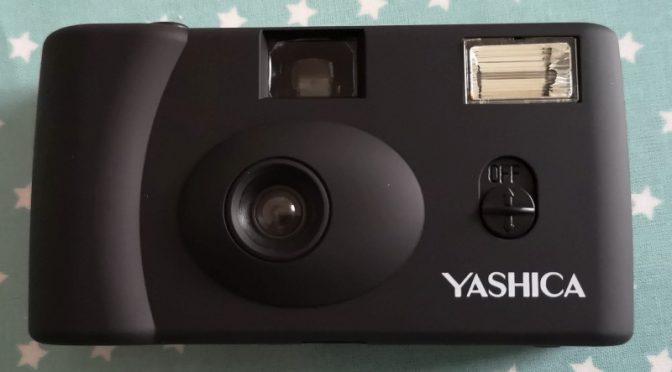
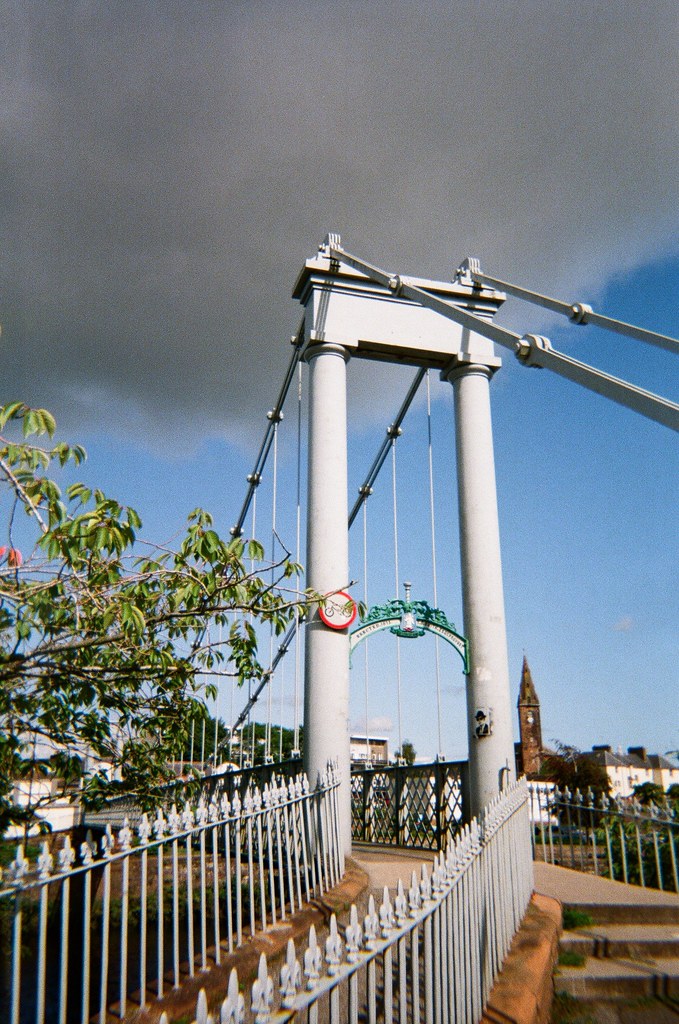

54 thoughts on “Reloading in the Disposable World – The New Yashica MF-1 Review”